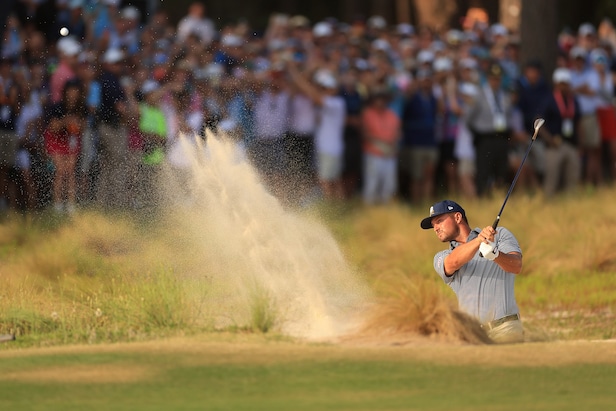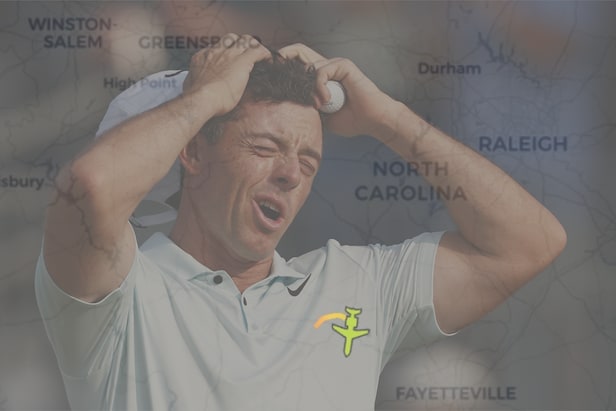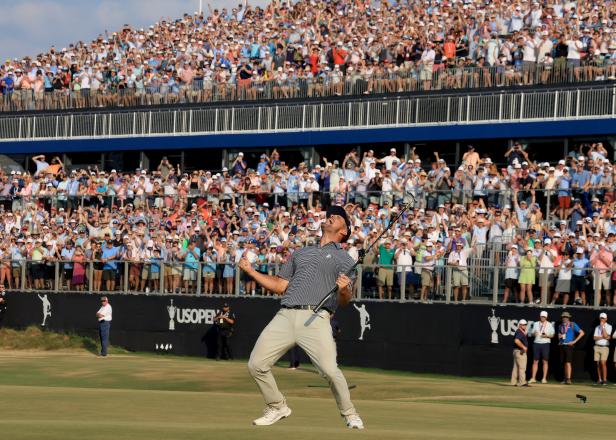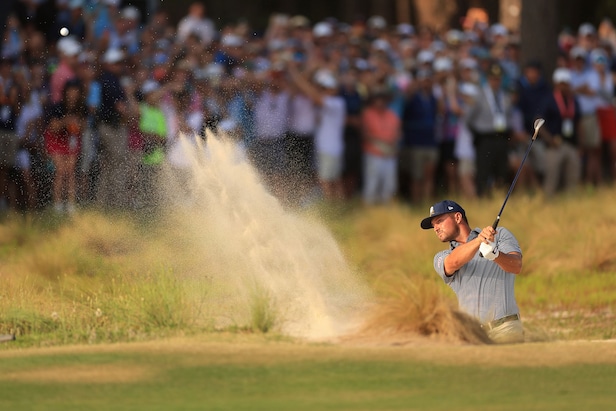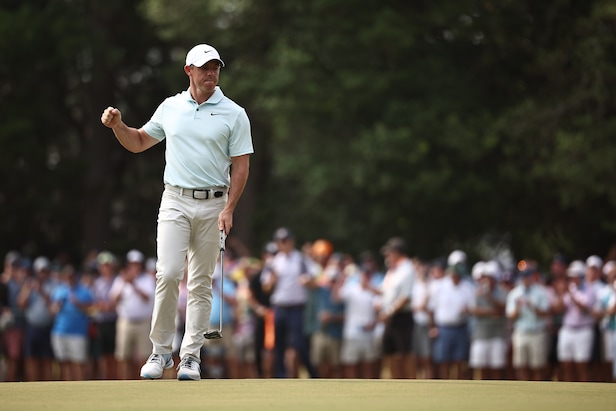Australian Golf Digest caught up with Cameron Smith and those close to him to see what lies behind the man with the mullet – and why he could be our next Major champion.
Ask any golfer in the Brisbane area what Cameron Smith is like and the reaction is usually a cheeky grin. When he moved overseas to chase his PGA Tour dream, Smith left behind a trail of people who’d lost putting comps, money games, state and national amateur finals, Interstate teams series – even banter exchanges – to him. Name the game, and Smith probably won it. Coaches, fellow players, family and friends all knew – after a while – to challenge Smith at your own risk. Especially if there was something he treasured on the line.
“I remember one day when he was younger and he was going to have a nine-hole putting comp with his cousin,” recalls Grant Field, his long-time coach. “I made him offer up something that’d hurt if he lost, which was the stereo in his Toyota Hilux. Cam missed the first two putts and I thought he might be flustered, but then he proceeded to hole seven tricky putts in a row to win and keep his beloved sound system.”
Smith, upon hearing that story, laughs. “Yeah, I was not going to lose that stereo,” the world No.25 tells Australian Golf Digest as he prepares for this month’s US Open.

Aussie vibes at Torrey Pines
Field, like most in Smith’s team, has been around since the beginning. Nothing’s changed, except Smith’s world ranking, win tally and PGA Tour career earnings. Field has coached Smith since the age of 11 and even once acted as his caddie. That was at the 2014 CIMB Classic, a US PGA Tour event held in Malaysia. It was at TPC Kuala Lumpur where Field says he witnessed one of the greatest shots he’s ever seen Smith pull off.
Securing a top-five finish was important for his management to secure PGA Tour sponsors’ invitations the next season.
‘I’ve always liked the tough stuff; i don’t know why. I think i like a challenge, trying to grind something out, and I think grinders win us opens – Cam Smith’
“Cam was high up on the leaderboard with a few holes to play and we got to the par-3 15th at TPC Kuala Lumpur,” Field recalls. “He hit his tee shot in the only place you can’t, which was long. He was faced with this impossible shot; he had to hit a lob shot out of the rough, land it on the fringe gently and let it release over a ridge and down to the hole. Anything within 10 feet would have been amazing. But he hit the most delicate lob shot that lipped out to a couple of inches for a tap-in. He parred in to lock up a share of fifth. The stones you need for that shot under that pressure, knowing you need a top-five, was just unbelievable.”
Smith will lean heavily on that short game when it comes to the US Open this month at the famed South course at Torrey Pines. The San Diego-area public course was where Tiger Woods famously battled injuries and dogged veteran Rocco Mediate to win the 2008 US Open after 91 holes of play.
The South course is already a beast when it combines with the easier North course to host the PGA Tour’s Farmers Insurance Open every January. But when the United States Golf Association gets hold of it, it will be an absolute brut.
That shouldn’t be an issue for Smith, who relishes tough conditions. He has also had good results at the regular event at Torrey Pines, including a tie for ninth in 2019. But that’s not why Smith feels he can play well at this US Open. It’s more to do with Torrey Pines’ picturesque setting in the northern part of San Diego County. The cliffs, bluffs, beaches and laidback seaside villages are reminiscent of Australia, which Smith misses dearly during the 10 or so months he spends each year in the US.
“I’ve always liked the tough stuff; I don’t know why,” Smith, who tied fourth on his US Open debut, tells Australian Golf Digest from his house in Florida. “I think I like a challenge, trying to grind something out, and I think grinders win US Opens.
“Torrey Pines reminds the Aussie players of home. The course is not necessarily one I get to and think, I’m going to play really well here. It’s more that I just have such a good time off the course that golf almost gets in the way. You play well because you’re enjoying yourself. You forget you’re there to play a tournament and it’s almost like you feel you have to wake up for your tee-time. It’s a really good spot. I love it.”
Smith remembers watching Woods limp around on an injured knee during his 2008 US Open win at Torrey Pines, especially the long-range eagle putt Woods made on the par-5 13th in the third round and the birdie putt on the 72nd to force a playoff. “It seems like such a long time ago,” Smith says.
Smith was 14 then. A wildly talented junior golfer coming out of Wantima Country Club, half an hour north of Brisbane’s centre. Now, he sits in the equal-best world ranking of his career, and it’s likely to get better this year. Such is his rich vein of form.
This writer noticed a mental change in Smith at the 2019 Presidents Cup, where he played a pivotal role despite the International team losing. He grabbed 1.5 points from three matches.
But it was the humiliation he dealt Justin Thomas, world No.4 at the time, beating him 2&1 in the Sunday singles. Thomas was visibly shattered to not grab that extra point for his close mate and US team captain Woods. Smith told your correspondent at the time he felt like a new golfer having delivered a big singles win on a huge stage.
A month later, Smith won the PGA Tour’s Sony Open in Hawaii. That’s where Australian sports fans really started to take notice of a golfer who shares a name with a Melbourne Storm NRL legend who also hails from Brisbane.
Last November, Smith truly became a household name when he tied for second at a COVID-19 postponed Masters at Augusta National – sticking it to eventual winner Dustin Johnson.
Another top-10 at Augusta this year, once the Masters returned to its April slot, as well as ninth the next week at the RBC Heritage tournament at Harbour Town, laid the platform for Smith’s third PGA Tour win in April.
Smith paired with countryman Marc Leishman, on Anzac Day, to win the Zurich Classic of New Orleans – a teams event Smith also won in 2017. All three of Smith’s PGA Tour wins have come in sudden-death playoffs.
Smith – remember, he is only 27 – now has a résumé boasting three PGA Tour victories, two Australian PGA Championship wins that were co-sanctioned with the European Tour, three top-10s at Augusta National and a US Open top-five finish.
Smith has soared almost 30 places up the world ranking since the 2019 Presidents Cup.
“I feel like my game is more complete now; I haven’t really massively improved in any one area,” he says.
“I’ve never really felt like I’ve had a weakness, but I feel like just every aspect has become 1 or 2 percent better. I’m a little bit more consistent across the board. I’m also competing a bit more week-in, week-out, which helps as well.”

Origins of a star
The first person, after Field, to notice Smith’s gift was talent manager Ian Davis, a former pro himself. It was at the 2005 Gary Player Classic at Pacific Golf Club in Brisbane.
Davis thought he was there to watch a young Jason Day. And he was; Day won his third Gary Player Classic title in a canter. But Davis also noticed a 12-year-old kid in the event called Cameron Smith.
Davis had a chat in the gallery with his father, Des, and made a mental note to follow Smith’s junior career. Davis kept tabs and would visit tournaments as Smith won big events such as the 2009 Handa Junior Masters, the Australian Boys’ Amateur, Australian Amateur Stroke Play and Victorian Junior Masters in 2011. He won the Australian Amateur Stroke Play again in 2012. In 2013, he won the Australian Amateur.
It was at that Australian Amateur, held at Commonwealth Golf Club on the Melbourne Sandbelt, that Davis saw something special as Smith was readying to turn pro. Every time his opponent, Geoff Drakeford, would pipe a drive or stiff an approach, Smith would hit it closer.
“He refused to back off and he also stepped up to each level of pressure throughout the final. It was incredible to see,” Davis recalls.
As Australia’s only local representative for the golf division of big American sports agency Wasserman, Davis has scouted the likes of Day, Leishman and Smith and put them in the stable. When they are in the US, the trio are managed by Bud Martin. “Cam has that loveable, larrikin nature but also a talent to really put the foot on the throat and close it out,” Davis says. “He is a great golfer and an even better person.”
Switching off
Smith is known by those around him as rather gifted at switching off away from golf. When he was young, Smith’s father, Des, taught him a saying, “Some days are diamonds and some day are ducks–t” when it comes to golf. Translated from Queensland speak, the phrase means golf ebbs and flows, and the best players understand how to ride the rollercoaster.
“Cam has an amazing ability to leave golf at the course. Once he’s done for the day, he’s done,” Field says.
Jason McDonald, a long-time friend of Smith and his family, recalls one afternoon during a trip over to watch Cam at the 2019 Masters that blew him away. “Cam had shot 77 in the final round and we were all renting a house together in Augusta,” McDonald recalls. “He had earlier promised my two sons he would kick the footy around with them after the round. He had every right to tell me he was too disappointed to do that, and that he needed some time alone, but he kept his promise. He played footy with my boys and they loved it.”
‘Everyone is on equal footing in cam’s life. he doesn’t see people for their job or status. if you’re in cam’s life, he treats you like a friend, regardless – Louis Dobbelaar’
Smith, who has missed not being able to return to Australia because of the pandemic, has built a good lifestyle in the Ponte Vedra area of Florida. He lives with girlfriend, Jordan, and the couple’s two dogs. His childhood best mate from Brisbane, Jack Wilkosz, also lives in Florida’s Jacksonville Beach area – just minutes up the road. Smith plays and practises at TPC Sawgrass, alongside the likes of Billy Horschel, Vijay Singh and Jonas Blixt. His true love away from golf is spending countless hours fishing. “I feel like enjoying myself off the course; I’m in a good place,” he says.
Gifted young golfer Louis Dobbelaar, who hails from Ipswich in Queensland and is also coached by Field, noticed that about Smith in a dream trip to the US in 2018. As part of a scholarship Smith runs for Queensland junior golfers, he paid for Dobbelaar and Jed Morgan to fly over to Florida and spend a week playing and learning the habits of a PGA Tour winner.
“One of the things I learned from Cam was how to get away from golf so that you’re always fresh mentally at tournaments,” Dobbelaar says. “He has a good network in Florida and lots of things like fishing, cars and friends, to take his mind off golf.”
Something else resonated with Dobbelaar, who will turn professional later this year, during that trip to Smith’s Florida base. “Cam is good friends with the superintendent at TPC Sawgrass, who comes around to Cam’s house every now and then and helps him out with his lawns,” Dobbelaar says of Smith, who has a love of lawns and turf. “They get along really well. It kind of stuck with me that everyone is on equal footing in Cam’s life. He doesn’t see people for their job or status. If you’re in Cam’s life, he treats you like a friend, regardless.”
Smith credited his parents for instilling that value.
“I think that’s a massive tick to the way my parents raised me,” Smith says of father, Des, and mother, Sharon. “Everyone is equal. Everyone is important. It doesn’t matter what you do for a job or how much money you have; you treat everyone the same.”
The mullet
During the COVID-19 pandemic, Smith, a rugby league fan, was inspired by NRL players back in Australia, who were all growing mullets out of boredom. Smith grew his own and it became more exaggerated as 2021 rolled around.
By the time it came to his title defence at the Sony Open in Hawaii, Smith’s hair had become a social media sensation – in US golf circles and in Australian sports media. He is now synonymous with the mullet.
“Initially, it was because the barbers weren’t open in Florida,” Smith recalls. “Then, I noticed I was getting a laugh when Jonas [Blixt] and his girlfriend first saw it. Then, at tournaments, Scotty (Adam Scott) and Leish were getting a laugh out of it, so I decided to keep it. Growing up in Brisbane it’s something I always thought about; having a mullet. Now it’s here to stay, I think.”
If anything, the mullet suggests Smith doesn’t take himself too seriously. That’s despite having a PGA Tour record that reads three wins, a runner-up, four third-place finishes, 24 top-10s and 53 top-25s – for career earnings of $US15 million.
You won’t hear Smith talk about his “brand” like some American golfers on tour. You won’t see him chop and change caddies and coaches after a bad run of tournaments. But don’t think that means there isn’t a desire to see how far he can take his career.
“I’m in a good place on and off the course and I’ve been playing really well,” Smith says. “But I think once you get a bit of a taste, where you’re up there contending all the time and you win, you want it more. So, I’m practising more. I want it more. That’s where I’m at.”
Smith’s tips for maintaining a mullet
1. Wonder wash. Wash your mullet once a week. Shampoo and conditioner work wonders for it.
2. Don’t brush it. You need to let your mullet run wild and grow in the shape it naturally would.
3. Get some salt water into it. Salt water tends to thicken it up and make it nice. It’s like having surfer’s hair. You get good volume and a waviness to your mullet.
Images courtesy of Penguin



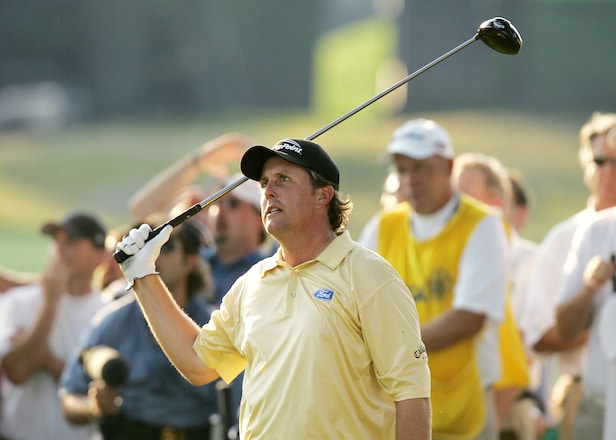
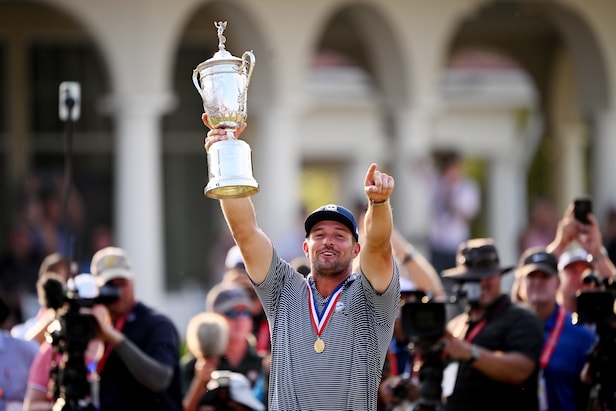
.jpg.rend.hgtvcom.616.411.suffix/1718587430154.jpeg)
